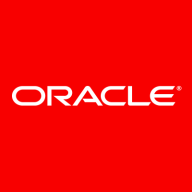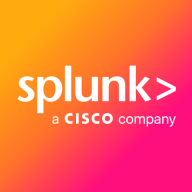

Splunk Observability Cloud and Oracle Infrastructure Monitoring Cloud Service compete in infrastructure monitoring. Splunk takes the lead with its detailed analytics and flexibility.
Features: Splunk Observability Cloud offers strong analytical tools, real-time alerts, and advanced visualization capabilities. Oracle Infrastructure Monitoring Cloud Service provides seamless integration with other Oracle products, robust data collection, and scalable monitoring solutions. Splunk's strength lies in analytical depth, while Oracle's strength is in integrated ecosystem features.
Ease of Deployment and Customer Service: Deployment of Splunk Observability Cloud is generally straightforward with strong customer support. Oracle Infrastructure Monitoring Cloud Service also offers straightforward deployment with comprehensive support and integration within the Oracle ecosystem. The main distinction is Splunk's superior support quality against Oracle’s ecosystem integration benefits.
Pricing and ROI: Splunk Observability Cloud is considered cost-effective with a strong ROI due to flexible pricing and lower initial setup costs. Oracle Infrastructure Monitoring Cloud Service requires a more significant investment but offers value through enhanced functionality and integration, leading to excellent long-term ROI. Splunk offers cost-effectiveness, while Oracle demands an initial financial commitment for greater functionality.
| Product | Market Share (%) |
|---|---|
| Splunk Observability Cloud | 2.0% |
| Oracle Infrastructure Monitoring Cloud Service | 0.4% |
| Other | 97.6% |


| Company Size | Count |
|---|---|
| Small Business | 20 |
| Midsize Enterprise | 10 |
| Large Enterprise | 46 |
Oracle Infrastructure Monitoring Cloud Service is a software-as-a-service solution that monitors the status and health of your entire IT infrastructure - on-premises or on the cloud - from a single platform. Proactive monitoring across all your infrastructure tiers enables you to be alerted on issues, troubleshoot and resolve these before they impact end users.
Splunk Observability Cloud offers sophisticated log searching, data integration, and customizable dashboards. With rapid deployment and ease of use, this cloud service enhances monitoring capabilities across IT infrastructures for comprehensive end-to-end visibility.
Focused on enhancing performance management and security, Splunk Observability Cloud supports environments through its data visualization and analysis tools. Users appreciate its robust application performance monitoring and troubleshooting insights. However, improvements in integrations, interface customization, scalability, and automation are needed. Users find value in its capabilities for infrastructure and network monitoring, as well as log analytics, albeit cost considerations and better documentation are desired. Enhancements in real-time monitoring and network protection are also noted as areas for development.
What are the key features?In industries, Splunk Observability Cloud is implemented for security management by analyzing logs from detection systems, offering real-time alerts and troubleshooting for cloud-native applications. It is leveraged for machine data analysis, improving infrastructure visibility and supporting network and application performance management efforts.
We monitor all IT Infrastructure Monitoring reviews to prevent fraudulent reviews and keep review quality high. We do not post reviews by company employees or direct competitors. We validate each review for authenticity via cross-reference with LinkedIn, and personal follow-up with the reviewer when necessary.